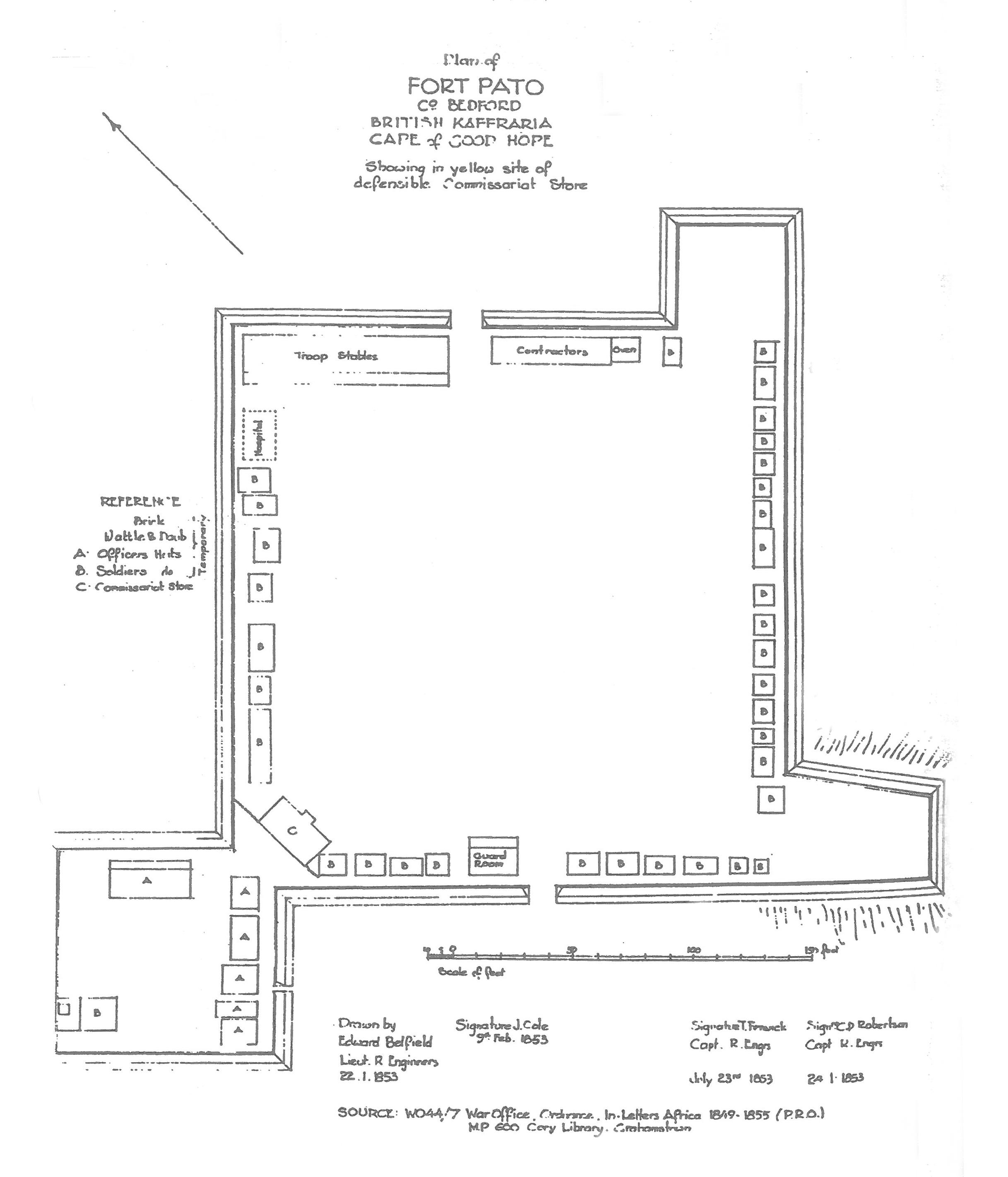On behalf of the Buffalo Volunteer Rifles Museum you are hereby invited to a 'historic' Battle Enactment near the site of Fort Pato, in the Fort Pato Forest (one of the East London Coastal Nature Reserves, managed by the Eastern Cape Parks and Tourism Agency). These types of enactments can lead to a better understanding of past events which have created divisions in this wonderful country of ours.
INTRODUCTION
The Buffalo Volunteer Rifles were approached by Mr S. Jabavu on behalf of Chief Pato to look at the possibility of staging a battle enactment at Fort Pato to commemorate the War of Mlangeni of 1850-1853. Meetings were held to identify the role players and draw up a programme for the event.
Chief Pato would like to see the Fort become a Tourist attraction and would like to see battle enactments become a yearly event.
Mr Robert Stegman in 'The Military Scene' also expressed the same sentiment in regard to making the fort a Tourist attraction. It is felt that the local population could be sensitised to the rich heritage of their area and be trained as guides for visitors.
HISTORICAL BACKGROUND
Fort Pato was named after Pato, Chief of the Amagqunukwebe and one of the major role players during the War of the Axe in 1846.
With the establishment of the river port at the Buffalo Mouth, military supplies for King William's Town were transported by wagon to the established forts in the interior. The Buffalo Line from Fort Glamorgan at the Buffalo Mouth via Fort Grey, Fort Pato, Needs Camp and Fort Murray afforded protection against sporadic attacks by the Xhosa who resented the presence of the military and traders in their traditional land.
Fort Pato was a temporary post which was established in 1853 on the Gulu river ridge - the so-called Goolah Heights - on the site of an outspan, to guard the supply line. Fort Pato became a safe place to rest oxen and soldiers on the way to the front.
It was a square redoubt enclosed by earth parapets, with two small square loop-holed bastions at opposite corners - see attached plan. It contained three stone buildings, a commissariat, a powder magazine, cookhouse and brick officers' quarters. Soldiers' barracks and stables were built of wattle and daub. Today the earthworks still exist in a fragmentary condition and remains of brick and stone can be seen within. It is however overgrown with shrubs and trees.
Plan of Fort Pato
ENACTMENT
Buffalo Volunteer Rifles will supply 20 men for security in the area - during the event - and 10 men to act as Xhosa Warriors. The Amagqunukwebe tribe will provide 15 men as Chief Pato's Warriors. The East London Caledonian Pipe Band will provide 10 members to act as British soldiers. The Arms Collectors Association will participate using black powder rifles - under the control and approval of the SAPS. Some of their Members will act as Traders. Two Ministers of Religion will also participate. An open area adjacent to the fort - with two ruined buildings - will be used for the enactment.
PROGRAMME: SATURDAY 13 OCTOBER 2018
- 09h30 All guests to be seated and role players to proceed to assembly areas. Master of Ceremonies to give the welcome address and confirm the programme.
- 10h00 British Soldiers to march onto the battlefield to their 'Fort' and settle in and play a few tunes.
- 10h10 Traders appear and ask the military for permission commence trading with locals
- 10h15 Two Xhosa Warriors arrive to trade but after a few minutes of bargaining a disagreement develops and a fight begins. A Warrior is injured by an accidental discharge of the Trader's firearm and helped by his comrade, disappears into the bush.
- 10h20 British Soldiers respond and then go to the aid of the Traders but before they can get back to the protection of the Fort, they are attacked by a group of Xhosa Warriors. Fighting continues for 10 minutes.
- 10h30 Rev Shaw's Party arrives on the scene, Bible in hand, he stops the fighting and prays for all to stop the fighting and make peace. He pleads for the laying down of arms.
- 10h40 The British flag is lowered and replaced by the new Republic of South Africa Flag. The Flag ceremony is conducted by the BVR members under command of MWO Hermanus RSM BVR.
- 10h55 All rise and sing the National Anthem
- 11h00 East London Caledonian Pipe Band to give a musical interlude and counter march display.
- 11h30 End of programme BVR members to clear battle site and by 12h30 strike down the tents etc.
Major (ret) A.J. Step |Buffalo Volunteer Rifles Museum Curator/Historian |Member of the South African Museum Association
Please address all queries to Major Step: stepmaj@gmail.com
Disclaimer: Any views expressed by individuals and organisations are their own and do not in any way represent the views of The Heritage Portal.

